Savory Slow Cooker Brisket – The Best Brisket Recipe with Onion, Garlic and Spices Made in the Crock Pot. Includes Recipe with Step-by-Step Video. Kosher for Passover.
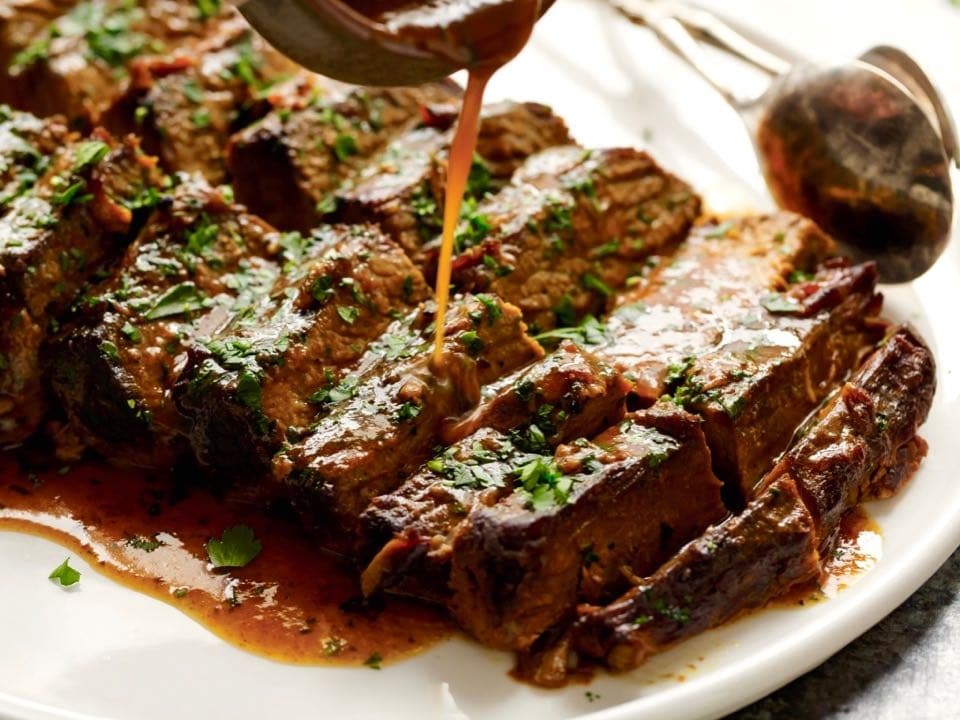
Want to know one of my biggest prep secrets for making the best brisket during the holidays? Two words – SLOW COOKER, or CROCK POT, if you’re so inclined! With my stove and oven in overdrive, there is nothing better than having a brisket slowly cooking in the background while I deal with everything else. It frees up oven space, and the results are every bit as tender and delicious as brisket in the oven.
We usually cook brisket for Passover. For larger Seder meals we have hosted in the past, I have been known to plug in four slow cookers at the same time, borrowed from family and friends! Over time I learned to make a couple of briskets ahead– the flavor improves when the meat sits in the refrigerator for a day or two before serving. It’s also easier to slice the meat cold, and reheating is a breeze.
Is brisket healthy?
While not exactly “healthy,” brisket isn’t all bad! You might be surprised to learn that researchers at Texas A&M have found that brisket does have some unexpected health benefits. According to Dr. Stephen Smith, Texas A&M AgriLife Research scientist, brisket has high levels of oleic acid, which produces high levels of HDLs, aka “good” cholesterol. Oleic acid produces HDLs which may lower your risk of heart disease, while lowering LDLs, aka “bad” cholesterol. And of course, brisket is a fantastic source of protein!
I recommend buying organic grass fed brisket when you can find it, and choosing a cut that is not too lean. Grass fed cuts tend to be lean, so choose a fattier cut if you can find it – and skip the trimming. Grass fed brisket can also take longer to become tender, so allow extra cook time just in case.
Should you wrap a brisket?
When storing brisket, it’s a good idea to wrap it to seal in the juices. After it has a chance to cool, brisket should be wrapped in an eco-friendly wrapping option of your choice. Never use aluminum foil, which can react to acid in your sauce. If reheating in the oven, foil is safe to use. I prefer to use parchment topped with foil on the roasting pan, so that the foil doesn’t come into contact with the meat.
Can you make this brisket ahead?
I’ve offered make-ahead directions for cooking the brisket below, as well as instructions for serving straight from the slow cooker. Either way, you will love this brisket… it is fork tender and flavorful, with delicious pan juices… everything the best holiday brisket should be!
Check out my separate tutorial for all things brisket here. For more Passover recipe ideas, hop on over to my Passover Recipe Index, where you’ll find delicious inspiration for a variety of dietary restrictions, including Ashkenazi, Sephardic, Gluten Free, Vegetarian and Vegan diets.
What should I serve with brisket?
Looking for some side dishes to pair with your brisket? Here are a few delicious ideas!
Oven Roasted Roasted Root Vegetables
Butternut Squash and Crispy Kale Bake
More Brisket Recipes
Here are some other tested, tasty brisket recipes for you to try.
Recommended Products:
We are a participant in the Amazon Services LLC Associates Program, an affiliate advertising program designed to provide a means for us to earn fees by linking to Amazon.com and affiliated sites. As an Amazon Associate I earn from qualifying purchases.
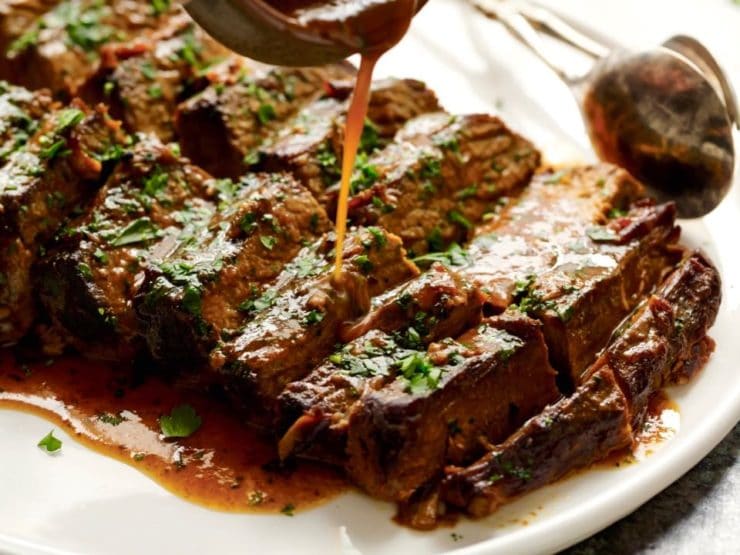
Video by Entice Films
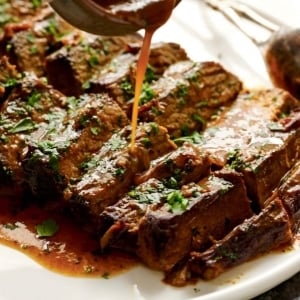
Savory Slow Cooker Brisket
Ingredients
- 4-6 pound brisket , first cut recommended
- 10 whole garlic cloves, peeled
- 3 whole onions sliced
- 3 bay leaves
- 1/2 cup water
- 2 tablespoons olive oil
- 1 1/2 teaspoons kosher salt
- 1 teaspoon black pepper
- 1 teaspoon paprika
- 3/4 teaspoon turmeric
- 1/4 teaspoon cayenne ; if you are very spice sensitive, just use a pinch
- 1 tablespoon cornstarch or potato starch, optional (use potato starch for Passover)
You will also need
- Slow cooker, large skillet, immersion blender (optional)
NOTES
Instructions
- Place half of the chopped onions, 5 of the garlic cloves and the bay leaves in the bottom of the slow cooker.

- Rinse the brisket and pat dry. Sprinkle both sides of the meat lightly with black pepper and salt. If you're using a kosher salted brisket, or if you are salt sensitive, skip the salting here -- there will be plenty in the sauce after cooking.

- Note about this next step-- if you're in a hurry you don't need to brown the brisket before placing it in the slow cooker, just mix the spices with the water and pour over the brisket in the slow cooker. However, if you do have time to brown it first the flavor will be much better! Drizzle 2 tbsp of olive oil into the pan and heat a large skillet over high heat until it just begins to smoke.Brown the brisket on both sides—it will take a few minutes per side. A large brisket may overlap the edges of the skillet; you can brown it in stages, letting half the brisket overlap the edge, then adjusting it to brown the other half. Make sure you get some nice dark brown bits on there, it really adds to the flavor.

- Once the brisket is browned, place it in the slow cooker on top of the onions and garlic.

- Drain the fat from the skillet, leaving behind any brown bits in the skillet. Return the skillet to the stove. In a small bowl, mix together the water, 1 1/2 tsp. kosher salt, black pepper, paprika, turmeric and cayenne. Pour the water and spice mixture into the skillet and heat over medium until hot and bubbly, using the liquid to deglaze the pan and loosening brown bits gently from the bottom of the skillet with a spatula.

- Pour the contents of the skillet over the brisket.

- Top brisket with the remaining sliced onions and garlic cloves. Cover and cook on low for 8- 10 hours, or until fork tender. Tenderness will increase as it cooks, so take it out when it's tender to your liking. Most people like it very tender but not so soft that it is falling apart. You want it firm enough to slice but tender enough that the edges shred with a fork.I recommend making this brisket ahead; allowing it to sit in the refrigerator for 1-2 nights will improve the flavor. If you would like to do this, check the notes section for the “Make Ahead Directions.” If you are not making ahead, continue reading.

- Remove brisket from the pan and let it rest on the cutting board fat-side up for 20-30 minutes.

- Meanwhile, skim fat from the surface of the cooking sauce.You may strain the sauce to separate the solids out and discard— if you do this, return the sauce to the slow cooker, mix together 1 tbsp potato starch or cornstarch (use potato starch for Passover) with 1 tbsp of cold water, and stir it into the strained liquid in the slow cooker. Alternatively, you may thicken the cooking sauce by first removing the bay leaves, then using an immersion blender to blend the sauce with the garlic and onions directly in the slow cooker (careful, the liquid is hot-- protect yourself with a towel and take care with more delicate ceramic slow cooker inserts).

- Once your sauce is ready, cut fat cap off the brisket.

- Then cut the brisket in thin slices against the grain.

- Return slices to the slow cooker and cover with sauce. Heat the meat slices on high setting in the sauce for 30-60 minutes more until sauce is hot, bubbly and thickened around the meat. Serve sliced brisket hot with sauce.

Nutrition


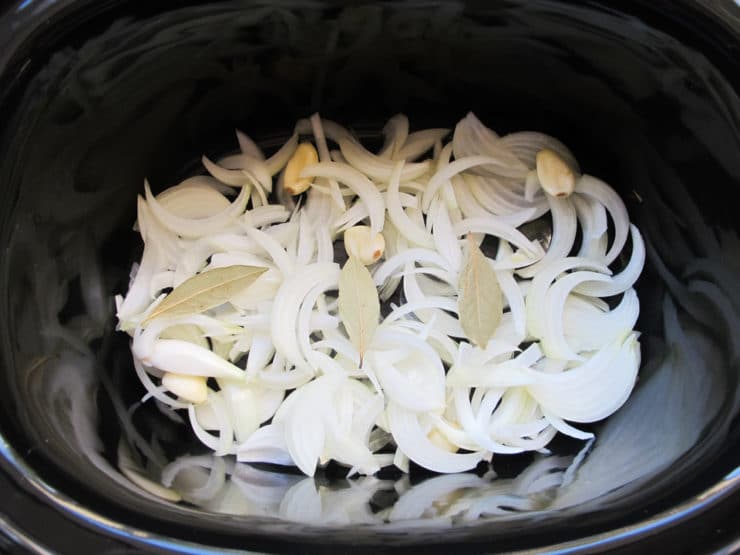
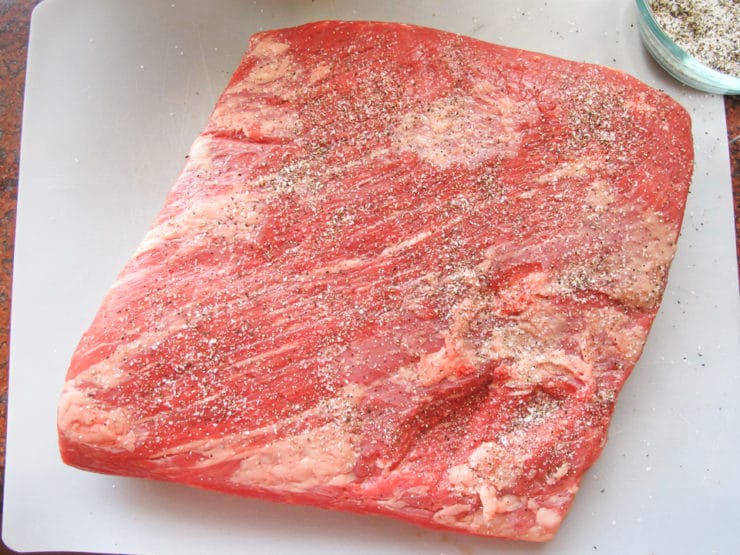
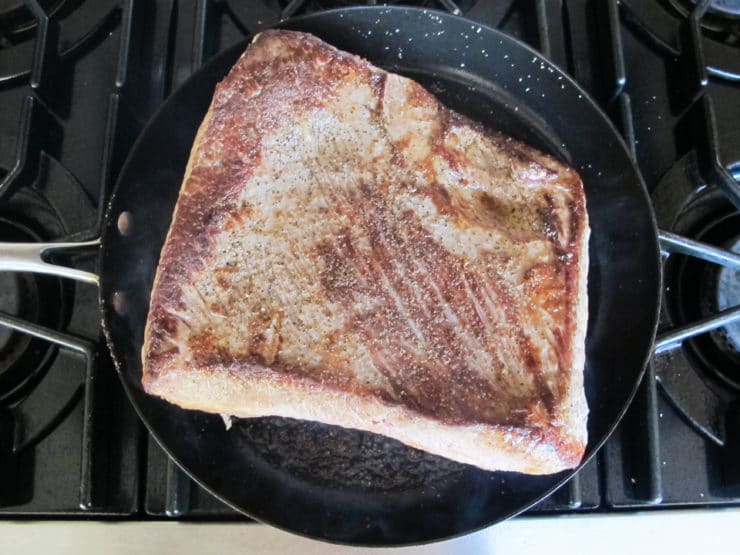

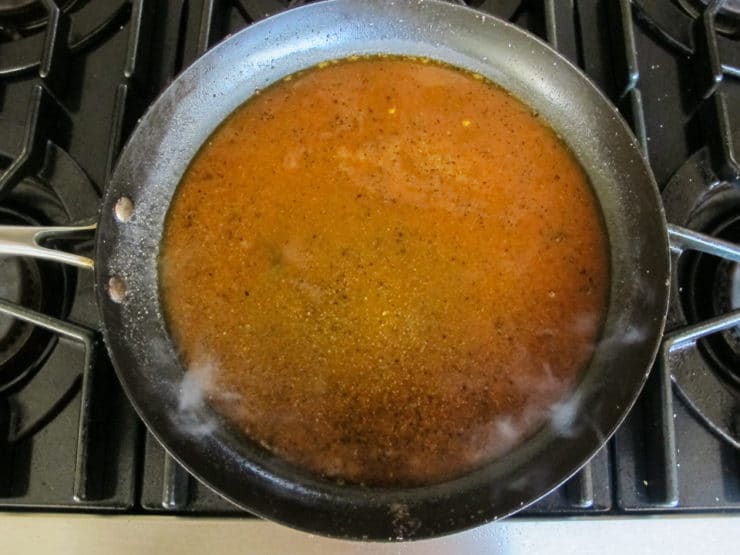
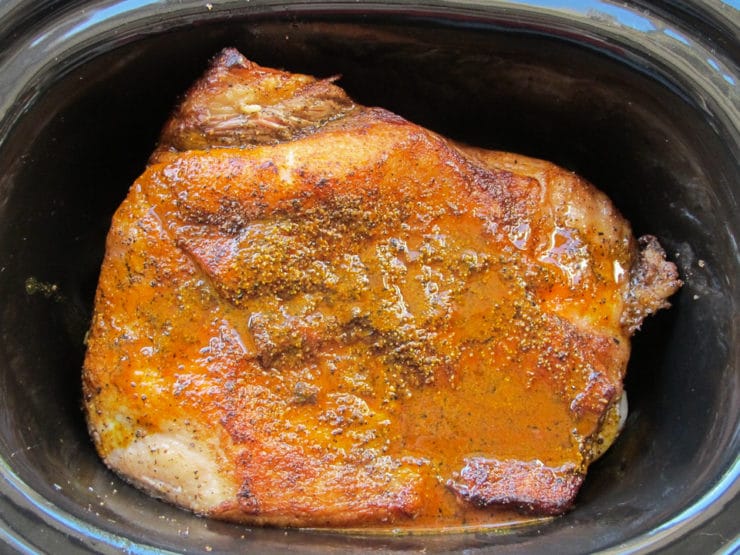
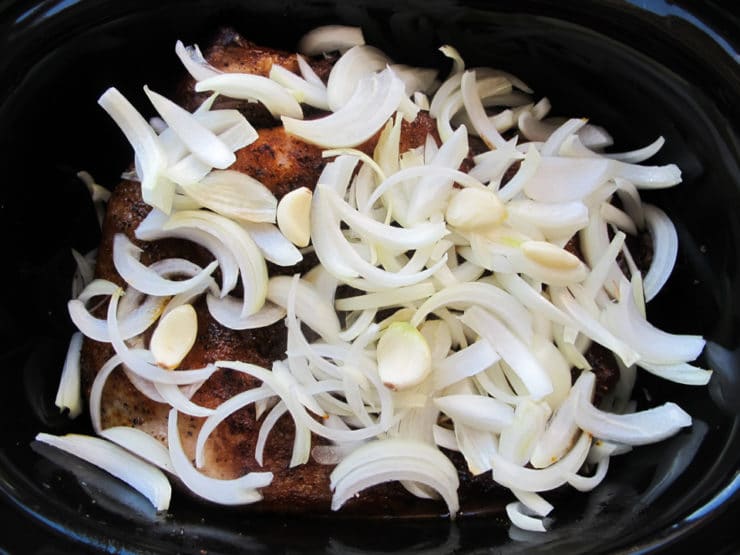
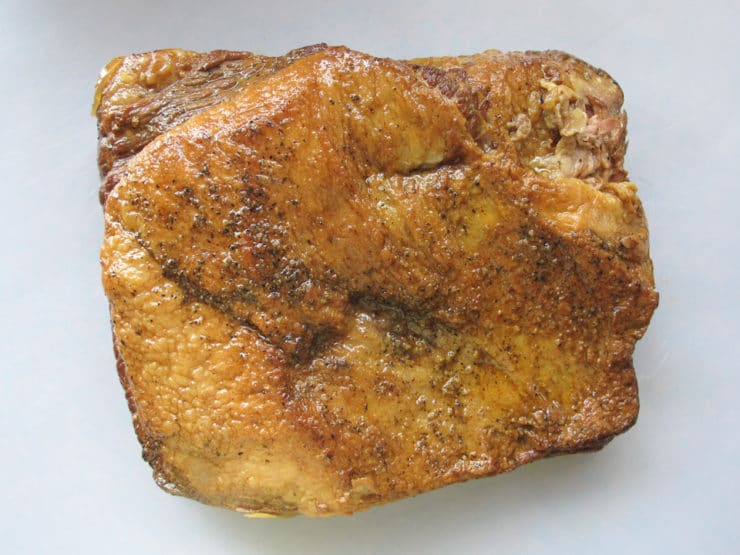
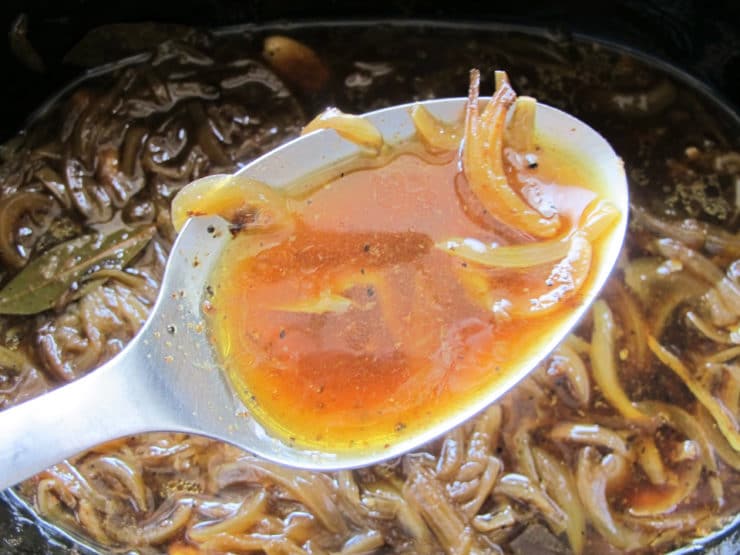
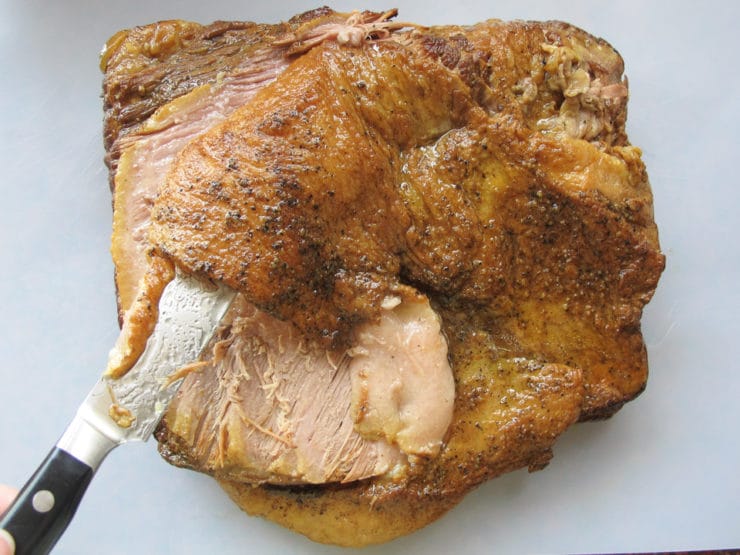

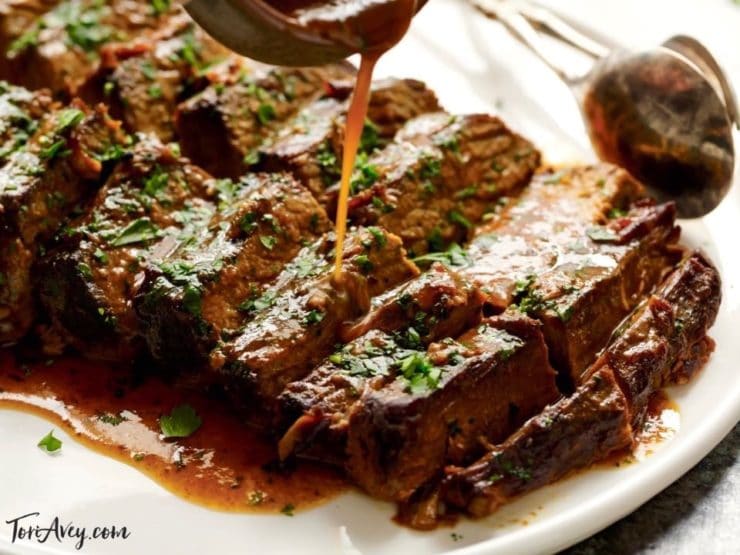


This was so simple but very delicious. I didn’t have cayenne so threw in some harissa powder and doubled it because I added some potatoes and carrots so they’d absorb the flavor. I was looking for savory and this fit the bill perfectly. Thank you so much!
Brisket was a hit with my family, nothing left.
Thank you.
“Nothing left” is my favorite kind of comment at this time of year!